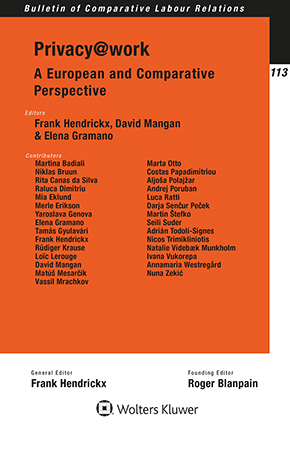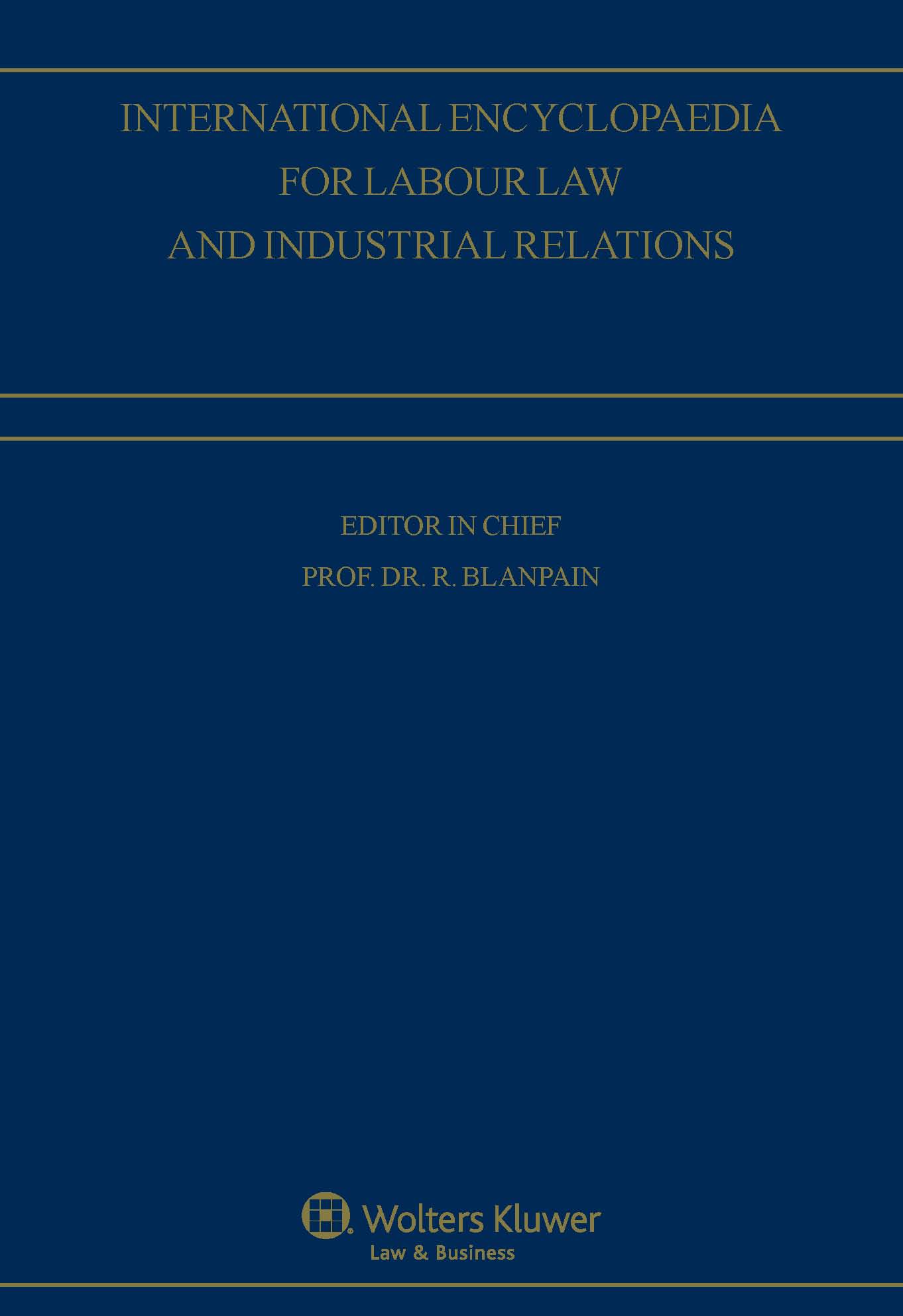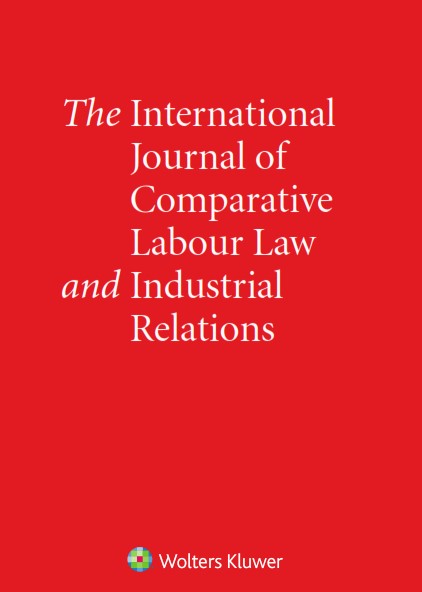Why employment labels obstruct inclusive social protection
August 18, 2025
Introduction
“The limits of my language are the limits of my world”, Wittgenstein wrote. This philosophical insight may also be true for our world of work. The limits of the language we use to talk about our world of work, may have a profound influence on how we regulate it.
One of the clearest limits of our language in the context of the world of work is the binary distinction between (standard) employees and self-employed workers; a distinction that continues to dominate both the way we regulate work and the way we talk about it. Initially only a legal tool, this binary framing has become a deeply rooted narrative that shapes how we think about social protection as a whole. As labour markets evolve, and the boundaries between employed and self-employed work blur, this traditional dichotomy is becoming increasingly unfit to address the complexities of modern work. Yet, it remains entrenched in our language.
EU-instruments (e.g. The Platform Work Directive) and labour law mainly try to overcome the blurring boundaries and rise of atypical work by focussing on the right employment qualification, although some critics also plead for a focus on working conditions in general without the need for a connection to employment status. In the field of social security law as well, more and more scholars advocate for a greater labour neutral approach, with labour specificities where necessary.1 Nevertheless, also in this field, the distinction between standard employees and self-employed workers is still to a large extent upheld, with often negative consequences for the access to and extent of the social protection of atypical and self-employed workers.
This blog post argues that prioritizing the debate on the distinction between employees and self-employed workers, a focus that remains all too prevalent at an EU-level, increasingly becomes difficult to justify. The current focus on the determination of the correct employment status obscures the real issue: the need for a universal approach in social protection.
Why the division exists
It is well-known that the distinction between employed and self-employed workers can be traced back to the rise of wage-dependent, subordinated work during the industrial revolution.2 Early demands of these workers centred primarily on labour protection and wages. Only slightly later, broader social protection concerns gained prominence. While forms of poverty relief and mutual aid had existed before, they proved insufficient in addressing the new social risks that accompanied industrial labour, such as work-related injuries and illness.3 As a matter of fact, what was needed were schemes that accommodated loss of income due to the incapacity to work. In response, the attention began to shift from poverty alleviation towards the development of social insurance schemes designed to compensate for loss of income due to such social risks.
These first social protection schemes were aimed at protecting the – at that time – standard employee, understood as the person working in subordination under a full-time, open-ended employment contract. Self-employed workers were regarded as autonomous and responsible for their own risks and hence not the primary target group. Although much has changed since then, the core structure and language of our social protection systems remain heavily influenced by the traditional design.
Social security systems are generally considered to serve two overarching objectives. The first objective aims at providing a minimum protection and to prevent poverty and social exclusion. The second goal goes beyond this basic safety net, and seeks to maintain a certain standard of living by replacing the income in case of temporary incapacity to work, or supplementing the income in case of additional costs due to the occurrence of a specific life event such as the birth of a child. Relevant to the discussion are the mechanisms that seek to replace the income when earnings from a professional activity are lost (such as for instance unemployment or sickness), as here, the distinction between the traditional employees and self-employed workers is often still upheld.
Even though social security schemes increasingly cover “atypical” forms of work and self-employed workers, in many EU Member States still gaps remain, both in terms of formal and effective access to the income replacement schemes. These problems of access to social protection are only part of the broader structural problem. More fundamentally, our binary terminology shapes our perception and has the consequence that our systems struggle to accommodate new, hybrid, and “atypical” forms of work that do not fit neatly into one of the two categories, leading to several problematic outcomes.
Why the division is no longer relevant
In practice, the line between employment and self-employment is blurred. This is not a new insight. In light of the changing labour market and the rise of “atypical work” and economically dependent self-employment, it does not surprise that the binary division is increasingly being questioned and that greater neutrality is being advocated. Authors such as ARANGUIZ or DE BECKER calling for greater neutrality in social security often wave the flag of fundamental rights, citing articles 22 and 25 of the Universal Declaration of Human Rights. Article 22 stating that ‘everyone, […], has the right to social security […], and article 25 emphasizing that “Everyone has the right to a standard of living adequate for the health and well-being of himself and of his family […]”. Reference is also often made to article 12 the European Social Charter, in which the obligation is laid down to establish and maintain a system of social security. The right to social security for all is widely accepted and increasingly seen as independent of one’s employment status. Above that, there is growing consensus that the level of social protection for contingencies connected to income loss from work should not depend on whether a person works as an employee, self-employed, or everything in-between.
Not only from a human rights-perspective is it important to get rid of the distinction; multiple other reasons show that the dichotomy should not be upheld much longer.
Firstly, a status-based approach fails to address the several “atypical” types of work and the in-between categories. Furthermore, it complicates the applicable social protection rules in the event of transitions between different forms of work. It often results in a less comprehensive protection for certain groups, as self-employed workers are still faced with difficulties in enjoying formal and/or effective access to social protection. Other difficulties include: the often low pay in atypical work; and how to deal with minimum (income/working time) thresholds in order to enjoy access to a social protection scheme. From a financing perspective in particular, a distinction with separate rules for the contribution levy may even lead to distortive labour market effects when a person decides to switch to another status, merely with the intention to reduce the financial burden that is connected with the contribution levy. Above that, when the financing of the benefits is not done adequately, deficits in the system at large may arise. The individual protection (due to the equivalence between the contribution and benefit side) may also be negatively influenced, leading the person to have to fall back on general means.
Several reasons, thus, to seriously question the binary distinction and apply a more neutral approach. This, however, is only possible if we move away from concepts that were designed for a labour market that belongs to the past.
Why the EU discourse hampers a more neutral approach
In my view, the EU can play a role in shaping how we talk about work, even with limited competences. EU social policy, laid down in Title X TFEU, encompasses both labour and social security law, two fields that remain closely intertwined. It is not a secret that EU competence in the field of social security remains relatively limited due to political sensitivity and the large national budgetary implications involved, whereas its regulatory reach is more prominent in the field of labour law.
As a result, legal initiatives have largely centred on the protection of workers within the labour law domain. This domain still puts strong emphasis on the binary division, something which was also confirmed in a recent study of the International Social Security Association. From a social protection perspective this leads to several problems, as touched upon earlier.
But even in the few (soft law) instruments in the sphere of EU social security in particular, we see that the binary distinction is upheld. For instance, Principle 12 of the European Pillar of Social Rights, highlights that “regardless of the type and duration of their employment relationship, workers, and, under comparable conditions, the self-employed, have the right to adequate social protection.” The language used is not neutral, and the persistent use of terms such as “employee” and “self-employed” in EU instruments, I believe, actively contributes to the entrenchment of a binary work model that no longer reflects the diversity of the contemporary labour market.
A similar remark can be made for the Recommendation on Access to Social Protection for Workers and Self-employed. This instrument seeks to broaden the scope of application to atypical workers and self-employed workers, yet still upholds the binary both in terminology as in substance, as the Recommendation, while advocating greater labour market neutrality, still differentiates between employees and self-employed, not only in language, but also by allowing a voluntary coverage for certain contingencies for the latter. The focus on the employment status distracts us from the real issue: how we can ensure that everyone enjoys adequate social protection?
I believe the consequences of this terminology are underestimated, and that as long as the focus remains on the distinction between self-employed and employees (a distinction that is reinforced by the terminology we use), we remain stuck in a vicious cycle, namely because even if these instruments would work flawlessly, it only scratches the surface as it applies strictly to certain delineated workers. The broader category of “atypical workers” or dependent self-employed workers, is more complex, and is growing. As ARANGUIZ rightly pointed out about new schemes targeted to specific new types of work, or exceptions to the existing schemes accommodating specificities of one particular work arrangement “only offer band-aid solutions”. These instruments might cover today’s problem, without considering tomorrow’s. From the moment a new form of work shows up (which likely will), we are back to square one because we desperately try to classify them.
In short, solving the classification problem does not solve the protection problem. As soon as we move away from the focus on categorising different types of workers, and instead look for an overarching term, such as “worker”, or “professionally active persons”, we can focus on the real challenges involved in designing social security systems for all workers. This allows us to address key issues such as how to deal with workers earning low incomes or working only a limited number of hours, questions that are more pressing from the point of view of the provision of effective access to social protection. In spite of limited competences, I believe the EU has a key role to play in shifting the emphasis, not only by nudging EU Member States in the right direction of universality, but also by adopting more inclusive and neutral language in its own instruments.
Concluding remarks and way forward
The way forward is in my opinion very clear: not clinging on to the employment classification. The way we speak about work is not neutral: it shapes how think, how we legislate, and ultimately also who gets socially protected. As long as this status remains the centre around which labour law and social protection debates revolve, the structural issues are omitted. It is thus time to use a more neutral language, which allows us to then focus on the more fundamental issues, and instead of focusing on the differences, we should identify the shared elements, for social security schemes covering income loss due to the incapacity to work, these shared elements are professional activity and income. If we take those as a starting point, both in legal design and language, we can move forward to a more universal and neutral approach to social protection.
____________________
References
1 See for early research P. SCHOUKENS, De sociale zekerheid van de zelfstandige en het Europese Gemeenschapsrecht: de impact van het vrije verkeer van zelfstandigen, Acco, Leuven, 2000. For later research: A. ARANGUIZ, The Demise of Standard Work and the Importance of Labour Neutrality and E. DE BECKER, Towards labour status neutral social security protection.
You may also like










